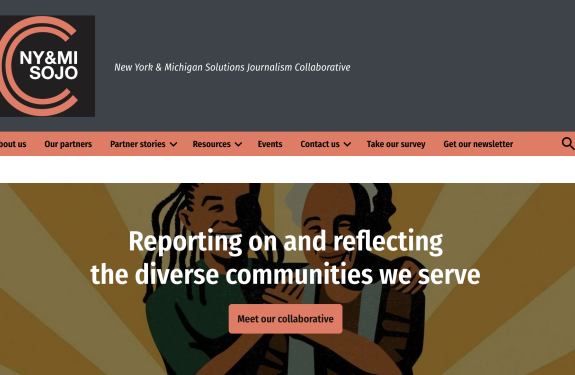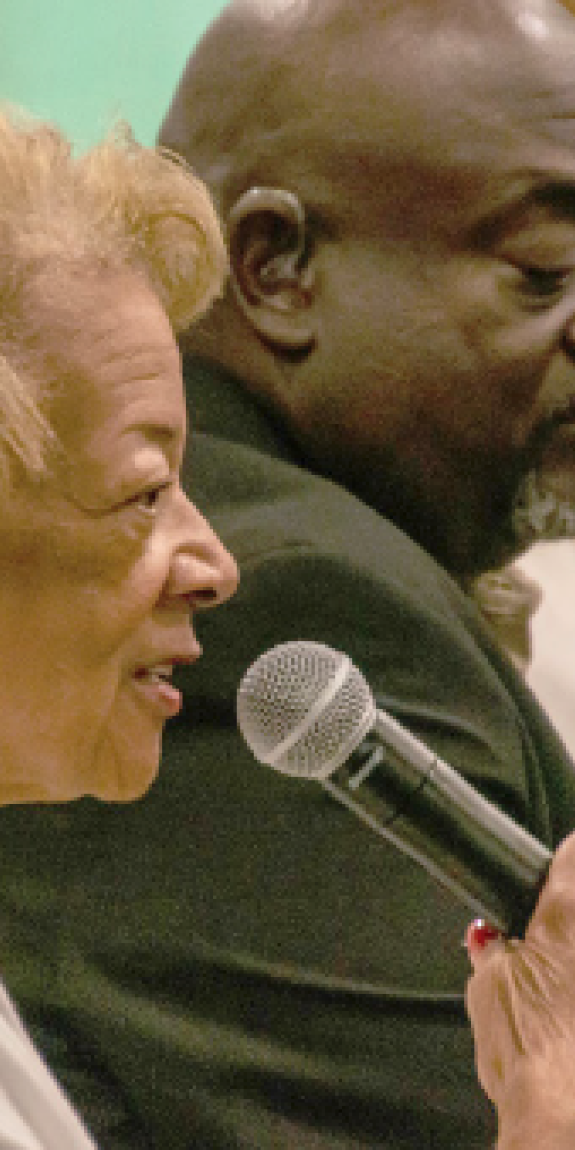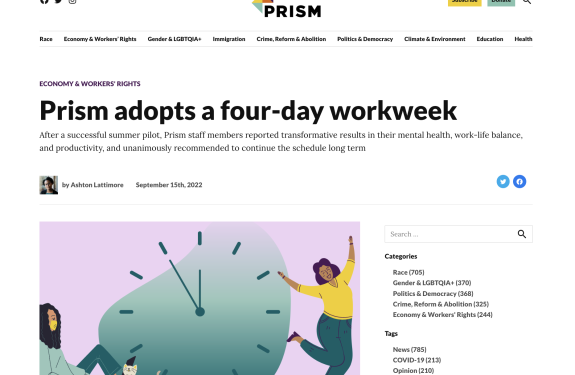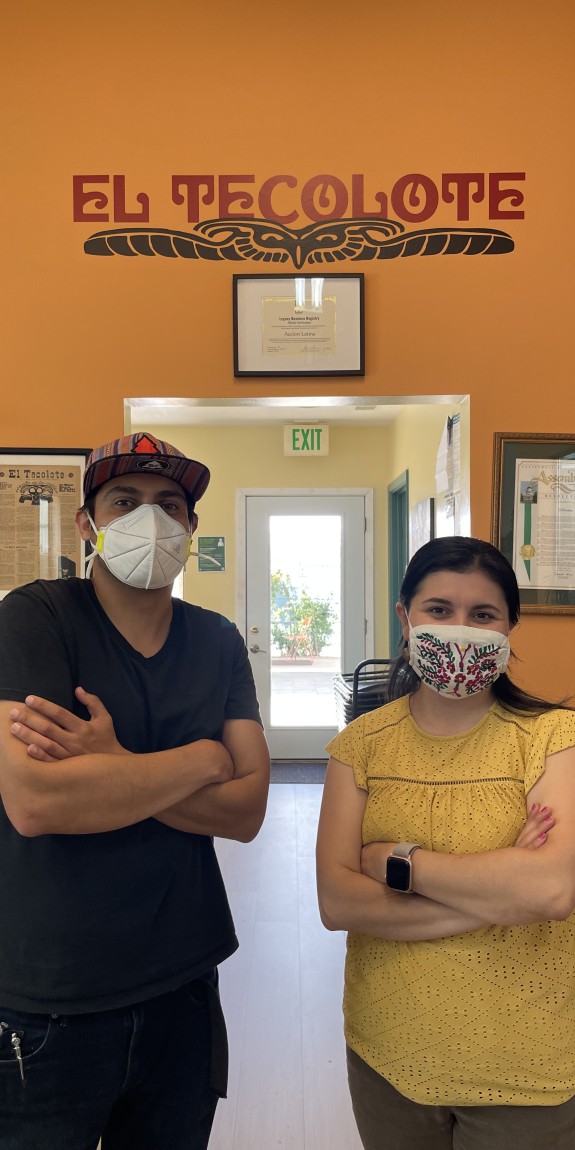More Initiatives
John Hernandez, formerly of Resolve Philly, on how solutions journalism can help journalism collaboratives focus their work and answer pressing questions.
The Local Media Project
The Local Media Project, in its fifth and final year, has successfully convened 15 news collaboratives in the United States. These collaboratives consist of news, community and civic organizations that work together for two years to address a pressing challenge in their respective communities and to develop plans for the ongoing financial sustainability of their shared efforts. Collaboratives practice solutions journalism in covering a wide range of topics, engage with their communities and adopt new technology and practices to elevate their journalism, as well as demonstrating the value of breaking down the walls of competition among news organizations.

As part of this work, SJN partnered with The Center for Cooperative Media and The Lenfest Institute for Journalism to write the Collaborative Sustainability Guide. The collaboratives also informed research by Caroline Porter and Elizabeth Hansen Shapiro at The Center for Cooperative Media, which was published as the report “Developing Journalism Collaborations for Local Impact: The Role of Collaborative Scaffolding and Solutions Journalism in Changing Local Media Ecosystems.” Their analysis suggests that “solutions journalism can develop and strengthen collaborative scaffolding in three ways: through meeting collaborators’ needs beyond monetary resources, by providing a rigorous way to test assumptions, and through fostering a sense of community.”

Spreading the word
A spokeswoman for a sewer district in northeast Ohio credited a solutions journalism story with helping double the number of low-income renters who signed up for a program aimed at helping them pay their sewer bills. The story was part of the Northeast Ohio Solutions Journalism Collaborative’s “Making Ends Meet” project, and was published by Ideastream Public Media, which represents local television and radio stations.

New solutions initiatives
A survey taken by members of the New York & Michigan Solutions Journalism Collaborative, which is focused on challenges facing caregivers of older adults, identified relationship-building, working together on coverage and content sharing as its biggest benefits. One respondent said that “bringing multiple news outlets together to work on one major project elevates the topic for our audiences and builds collaboration and creativity among reporters and editors.” Another said the collaborative “created something out of nothing!” That respondent added, “Things are happening, alliances have been created, and content is being made and shared.”


The Great Salt Lake Collaborative, a coalition of 23 news and education partners covering challenges facing the Great Salt Lake, took home the top prize in the national “Local that Works” contest. The award is a project of Current, a nonprofit news organization that covers public media for industry professionals. Finalists were chosen from a pool of 96 entries from public broadcasters, nonprofit newsrooms and other media groups. The collaborative has produced over 150 stories covering issues like the Great Salt Lake’s dwindling water levels and solutions for abating the crisis, such as the project "At Water's Edge," published by Deseret News. Heather May, project manager of the collaborative, said, "I think the focus on solutions is what has brought hope to the community, which I think everyone is yearning for."

Beacon Cohort
The Beacon Cohort is a pilot with five newsrooms (Corpus Christi Caller-Times, The Dallas Morning News, Flint Beat, Montana Free Press and Richland Source) committed to making solutions reporting an essential part of their regular coverage in ways that could serve as models for others. Over nine months, they built a commitment to solutions journalism throughout their newsrooms, learned how to better help their audiences identify and understand the value of this approach, and experimented with better ways to measure the impact of the solutions-focused work.

A solutions-focused package produced by six news organizations won second place in the education category in the National Headliner Awards, one of the nation’s oldest and largest journalism contests. The winning entry included a series of stories that explored where and how schools are making progress in boosting students’ reading skills, which suffered during the pandemic. The six news organizations, AL.com, The Christian Science Monitor, The Dallas Morning News, The Hechinger Report, The Post and Courier, The Seattle Times, plus The Fresno Bee, are now working on the fifth package of solutions-focused stories they’ve jointly produced since March 2021.

Making solutions part of day-to-day coverage requires rethinking priorities — and long-held views and habits. It's a cultural shift within many newsrooms. The Beacon Cohort offers short case studies of what this looks like in practice.
Health
The Health Equity Initiative includes a cohort of U.S. newsrooms dedicated to reimagining the way they cover health. These newsrooms produced solutions stories and series and are reporting outcomes including increased engagement with their stories online and on social media, an accountability spotlight on public officials, new resources for historically marginalized communities, deeper engagement with Black, Latino and Asian communities, and subscriptions from new readers who value the work enough to want to pay for it.
Examples of the reporting emerging from this cohort:
- These Japanese mothers banded together through a support group to talk about mental illness (Los Angeles Times)
- In one of the worst regions to have a baby, Southern universities bet big on midwives (Reckon News)
- Community workers fan out to persuade immigrant seniors to get covered by Medi-Cal (El Tímpano)

Next City, a nonprofit newsroom in Philadelphia with a strong focus on solutions journalism, generated $115,000 in reader revenue in 2021, part of a trend of increasing audience support for the publication. Next City puts a priority on its solutions reporting and highlights it as part of its mission.
Equitable Labor Practices
SJN’s Labor Cohort gathered 10 newsrooms from across the country to examine systemic labor issues and responses that are helping advance more equitable labor practices. The newsrooms represented a diversity of voices in the journalism industry, from legacy print publications like New York Amsterdam News and El Tecolote in San Francisco to the community radio station WMMT in Eastern Kentucky, Graham Media Group’s seven TV stations and the new online startup Arizona Luminaria, which publishes in Spanish and English. These newsrooms cover rural communities, large cities and national issues. Some created labor beats within their newsrooms; others folded solutions journalism into their existing coverage.
Through a nine-month initiative, the newsrooms produced dozens of text, radio and other broadcast labor stories, more than half of which focused not just on problems but on responses to them as well. SJN funded additional community engagement work, and several newsrooms held successful in-person events with sources from their stories; these events increased engagement and helped bring in new members who see the value in paying for the newsrooms’ efforts.

A solution inside the newsroom
After Prism, a national nonprofit newsroom led by journalists of color, published a story that examined the advantages of a four-day workweek as part of its reporting during the Labor Cohort, the publication itself adopted a four-day schedule. In an article explaining that decision, Ashton Lattimore, Prism's editor-in-chief, said the newsroom found the benefits far outweighed the challenges.
